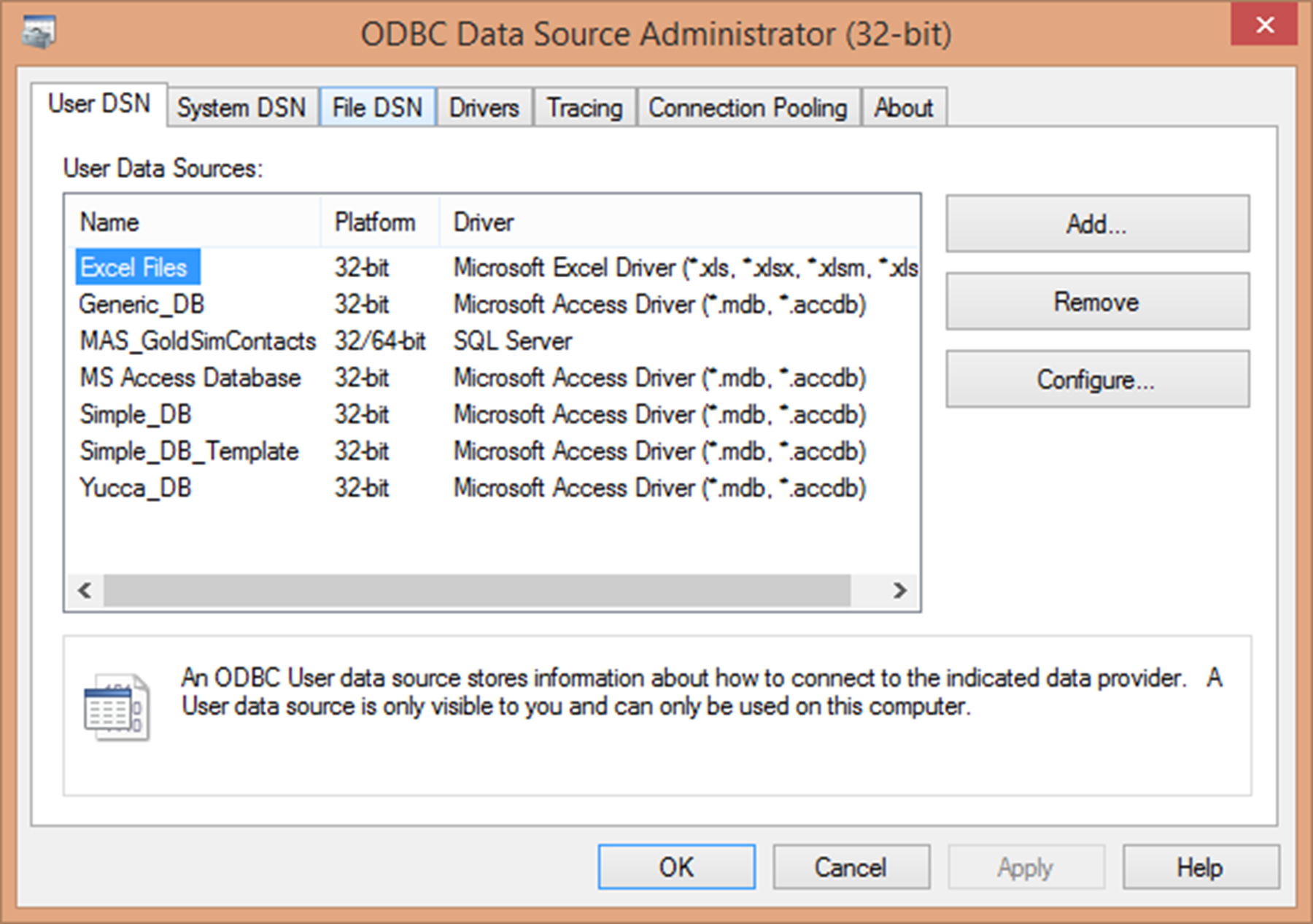
- #Odbc driver for sql server linux how to
- #Odbc driver for sql server linux install
- #Odbc driver for sql server linux drivers
- #Odbc driver for sql server linux driver
Verify the integrity of your download: 64-bit Red Hat Enterprise Linux 5
#Odbc driver for sql server linux driver
If you previously installed the Microsoft SQL Server ODBC Driver for Linux Community Technology Preview (CTP), please follow the “Upgrade from Community Technology Preview” instructions below instead of these installation instructions.ĭownload the Microsoft SQL Server ODBC Driver or Linux package for your platform by clicking one of the download buttons.

Microsoft Download Manager is free and available for download now. It also allows you to suspend active downloads and resume downloads that have failed. It gives you the ability to download multiple files at one time and download large files quickly and reliably.

The Microsoft Download Manager solves these potential problems. You might not be able to pause the active downloads or resume downloads that have failed. (You would have the opportunity to download individual files on the "Thank you for downloading" page after completing your download.)įiles larger than 1 GB may take much longer to download and might not download correctly. In this case, you will have to download the files individually. You may not be able to download multiple files at the same time. If you do not have a download manager installed, and still want to download the file(s) you've chosen, please note: Stand-alone download managers also are available, including the Microsoft Download Manager. Many web browsers, such as Internet Explorer 9, include a download manager. Setup odbc.ini by assign the sqlite file location.Generally, a download manager enables downloading of large files or multiples files in one session. Opening a connection using the default credentials (username: "dba", password: "dba"): Virtuoso / SPARQL /etc/odbc.ini ĭescription = Virtuoso Open-Source Edition To work around error messages this URL proved helpful so here it is as well. However this might be a good reference for the OpenOffice part. This website got me going on ODBC with MySQL but left out some things that were necessary for me If you have a problem connecting then check the error message by running If the connection is established, you will see $ mysqladmin -h localhost -u root -p create test You can use one of the MySQL front-ends such as mysql-workbench, or the command-line mysqladmin command: MariaDB ODBC driver connection strings and configuration guide Create a test databaseĬreate a new database "test". If a data source is defined in both of these files, the one in your home directory take precedence. Set up your data sources in /etc/odbc.ini (system wide) or ~/.odbc.ini (current user). SQL Server ODBC driver connection strings and configuration guide Mariadb Host = 192.168.0.2 # Host name or IP address. Sqliteodbc is ODBC driver/connector for sqlite.ĭatabases Microsoft SQL Server 2000 /etc/odbc.ini Starting with odbcinst.ini, which lists all installed drivers.
#Odbc driver for sql server linux install
Install the mariadb-connector-odbc AUR package. Myodbc is ODBC driver/connector for mariadb. The configuration file of FreeTDS itself is /etc/freetds/nf. Technically speaking, FreeTDS is an open source implementation of the TDS (Tabular Data Stream) protocol used by these databases for their own clients.Ĭonfiguration /etc/odbcinst.ini More instruction at each driver section.įreeTDS is a set of libraries for Unix and Linux that allows your programs to natively talk to Microsoft SQL Server and Sybase databases.
#Odbc driver for sql server linux drivers
First to access your database on your localhost and then extends the steps to configure MySQL to allow remote access through ODBC.Īdditionally you can choose from various Devart ODBC drivers for SQL Server, Oracle, MySQL, SQLite, Firebird, PostgreSQL, Interbase.ĭriver are declared in /etc/odbcinst.ini, and connections in /etc/odbc.ini.

#Odbc driver for sql server linux how to
This document shows how to set up unixODBC. Apparently unixODBC is more widely supported. You have two options to chose from: unixODBC and iODBC.


 0 kommentar(er)
0 kommentar(er)
